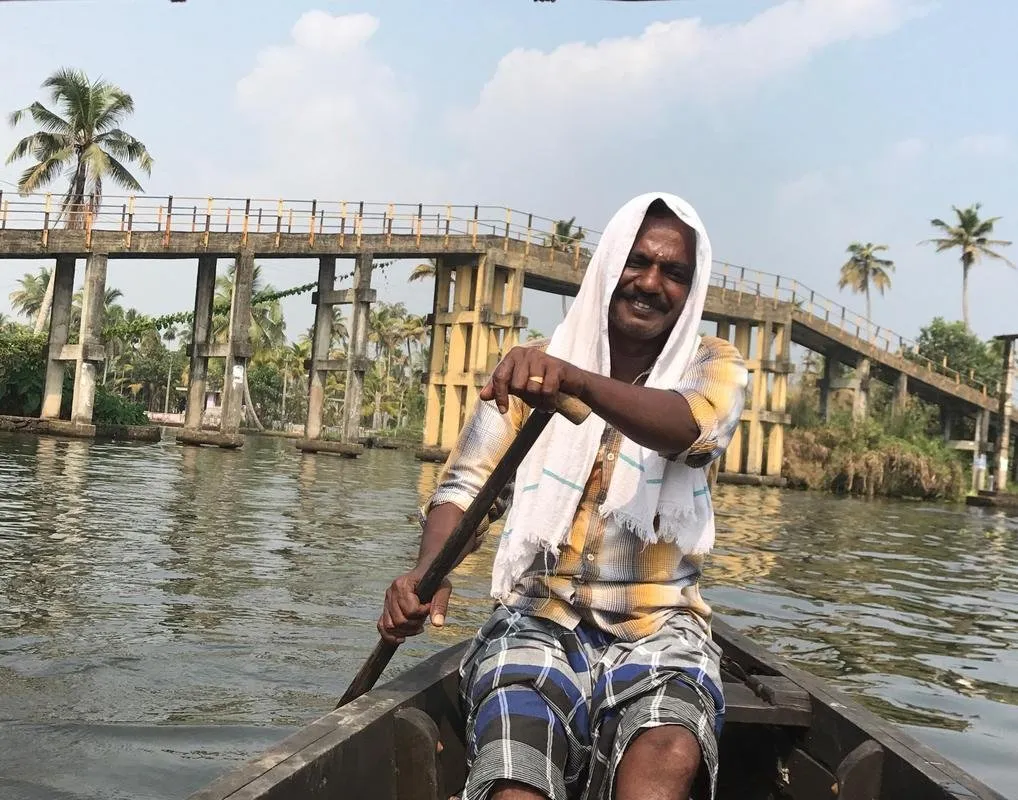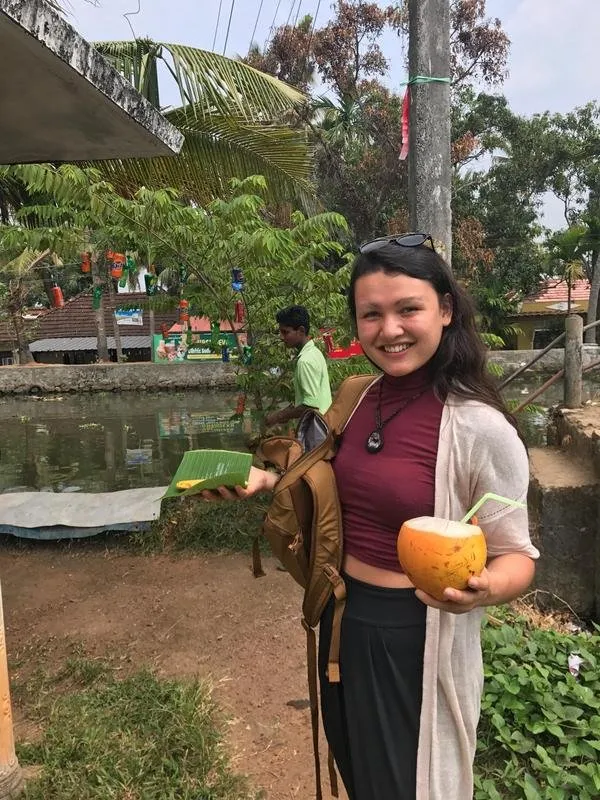
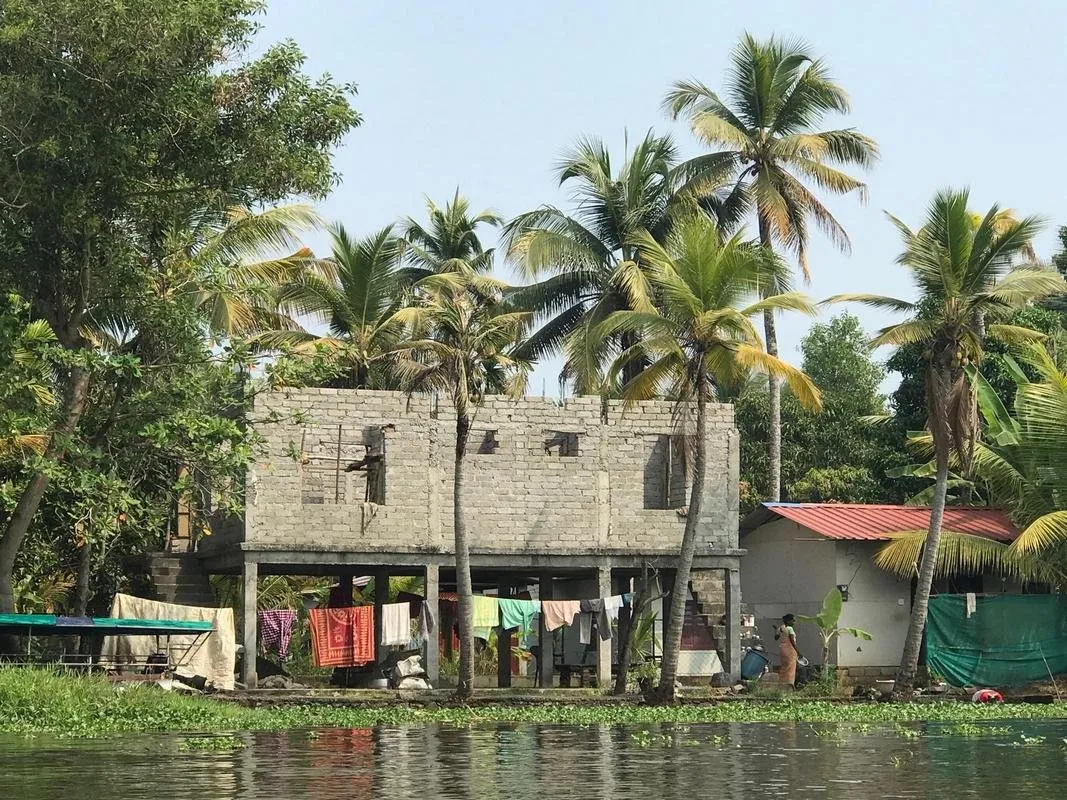
A Day of Canoeing
Today I did a full day canoe trip of the Alleppey backwaters. Alleppey is the city known for Kerala’s backwaters, which are a set of lakes and lagoons that run parallel to the ocean. They are connected by canals and fed by 38 rivers. Alleppey has over 1000 houseboats that you can rent out by the hour or for multiday stays. The houseboats are pretty expensive and apparently also a bit overrated. Instead, I opted for a 8-5 canoe tour, which ended up being the perfect way to explore the area. It cost a total of 900INR (around $15USD), which included breakfast, lunch, and transportation.
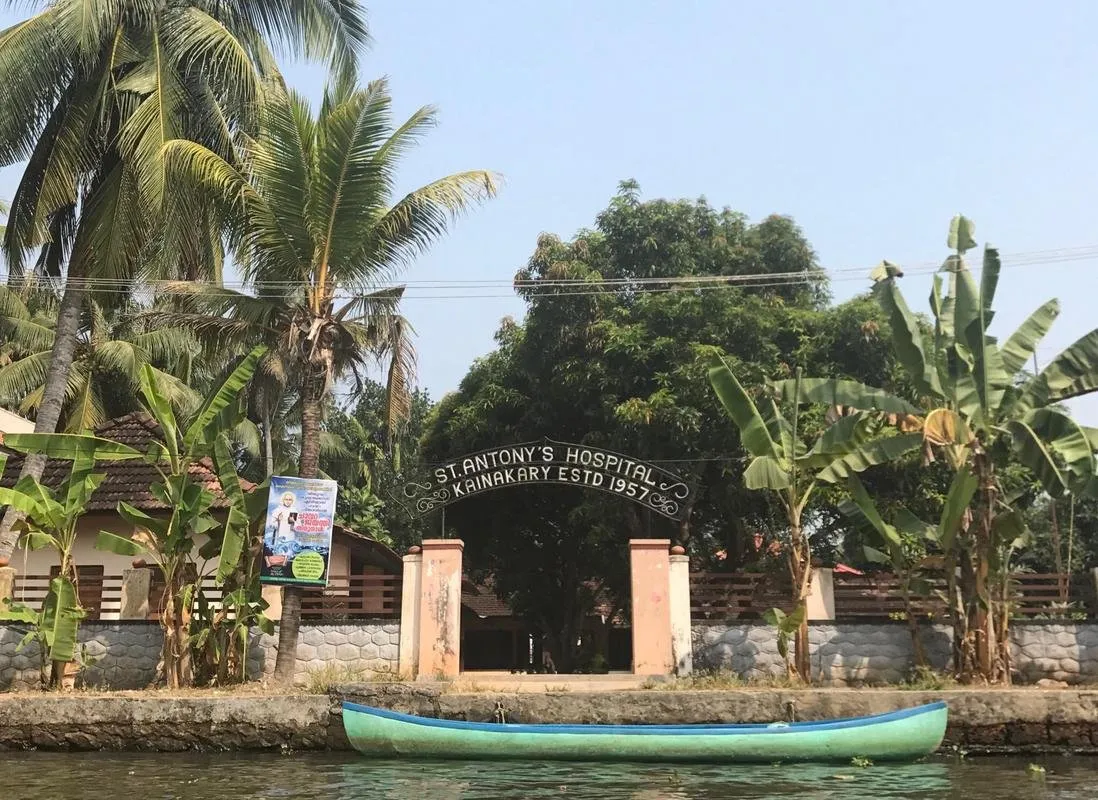
I started the day off with my homestay host, Asfal, taking me to the ferry station on his motorbike. It was the first time that I had rode a motorbike in India, which was exhilarating due to the crazy traffic. I hopped on the ferry, along with about 20 other folks on the tour, and we journeyed into the backwaters. After about a 30 minute ferry ride we got out and walked to a home on one of the islands. Breakfast was waiting for us, which was idly and sambar (fermented rice cakes with a lentil veggie stew). After breakfast and a chai, we separated out into groups of four for the canoes. I was lucky and got in a canoe with only two other people plus the tour guide. The two people were a wonderful couple from Germany and New Zealand, and we hit it off right away and chatted the whole day.
The Start of the Canoeing
The tour guide sat in the back of the canoe and rowed us through the canals and lakes. It was so peaceful to be just a few inches higher than the water. It was also lovely to be in a non-motorized vehicle, both for the noise and for environmental sustainability. For the first 45 minutes or so of being in the canoe, we were in a larger lake surrounded by way too many houseboats. However, we soon ventured into the smaller canals that houseboats are not allowed into. The backwaters have many different island stretches that all have homes built on them. The residents are connected by the canals, and almost everyone has their own boat to get from place to place. There are also small roads in most of the island stretches, but not large enough for a car to drive through.
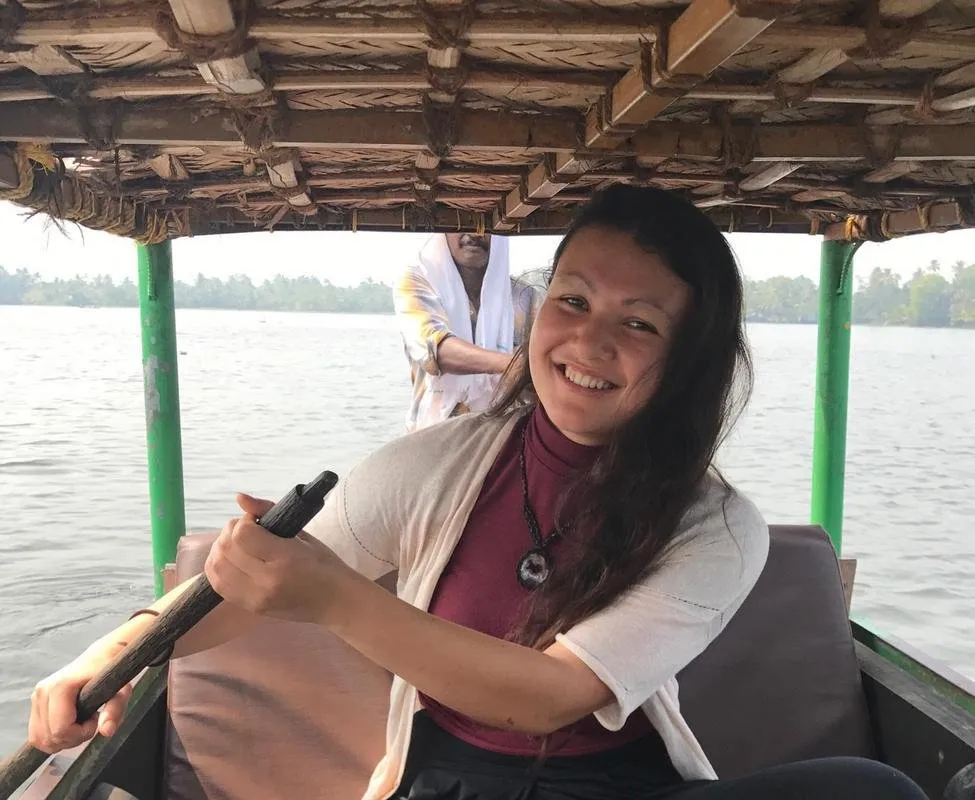
The Canals & Community
The canals seemed like the bloodline of the community. Every where I looked I saw a woman washing dishes in the canal, or a man taking a bath, or kids swimming and playing, or two people rowing a boat filled with coconuts. The most common sight was women doing the laundry in the canals. Each home had it’s own step access to the canal with a little rock or cement alcove meant for clothe and dish washing. As part of the laundry process, I often saw women taking a skirt or shirt and continuously slapping it against a large rock slab. Most island stretches were bordered by a canal on one side and rice patties on the other side. Many dishes in Kerala are made with rice, so it was great to see where some of it comes from.
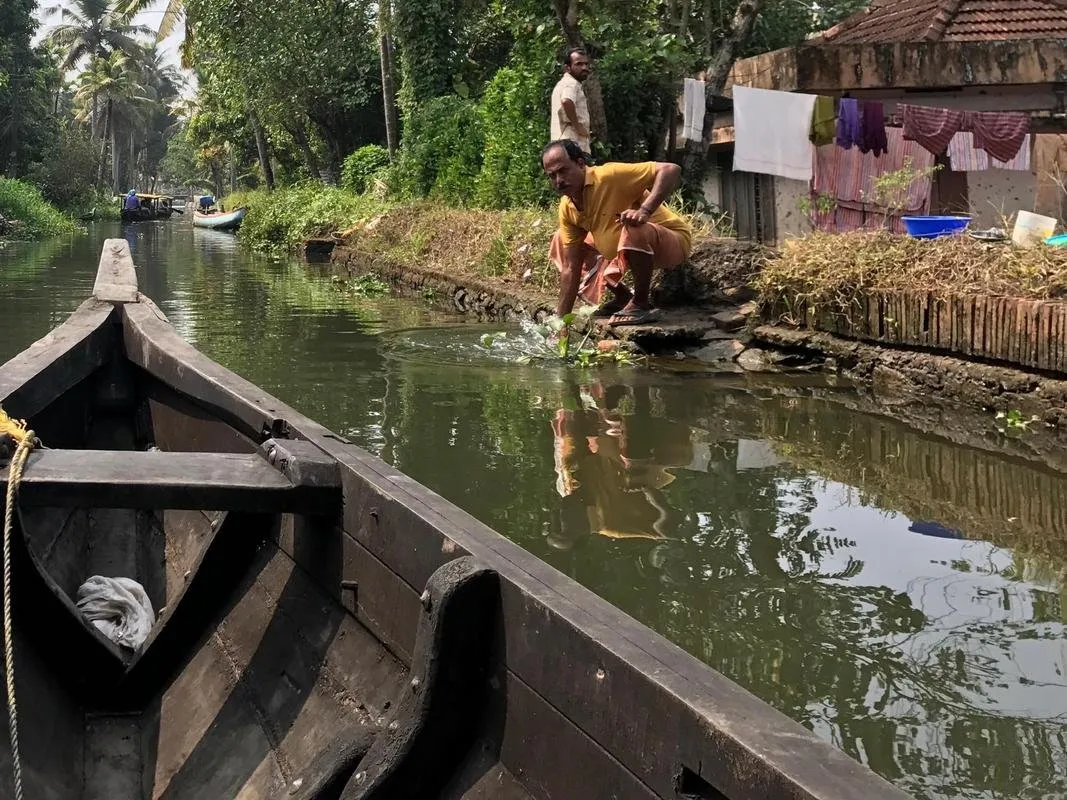
On Plastic Waste In India
After a couple of hours in the narrow canals, we stopped in a small village and took a 30 minute break to wander around and fill up at the local watering hole. This watering hole was offering fresh coconuts, pineapples, and fried bananas. I had a coconut and fried banana, which was so delicious. The fried banana was served in a banana leaf, which I loved. It makes sense to use naturally occurring, biodegradable, and hyperlocal materials for packaging. This is what humans did for centuries before the invention of plastic. However, now that plastic has dominated the scene, the backwaters (and the rest of India that I’ve seen) is littered with plastic. Before, when folks were using packaging like banana leaves, it made sense to just toss it on the ground where it would quickly decompose. Now, the practice of tossing the waste on the ground remains, however the waste is no longer biodegradable and so you’re left with trash filled streets.
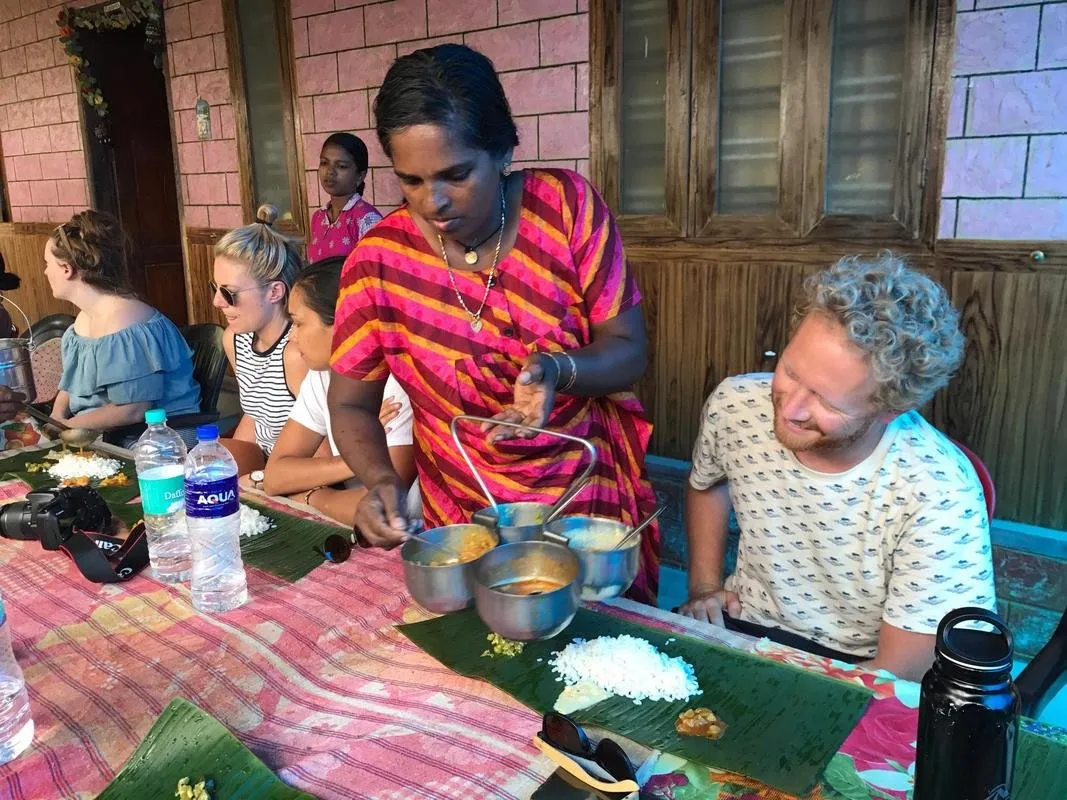
Lunch and Endings
After another couple of hours in the canals, we returned to the home and had a large lunch. Lunch was a thali, which consisted of rice, papadam (fried lentil cakes) and various other stews and chutneys and thorans that you could dip the rice into. Thalis are all-you-can-eat, so the family that was hosting us came around every few minutes to top off our plates with more rice or sambar or coconut chutney. I mistook a green chili for an okra and ate the whole thing. I have very low spicy tolerance and was in tears for a bit, though it was funny. Time moves slowly in the backwaters, and after a good amount of waiting we made it back to the ferry dock around 5pm. The entire day was extremely relaxing, slow paced, and an ideal way to tour around the backwaters in a cheap and eco-friendly manner.

